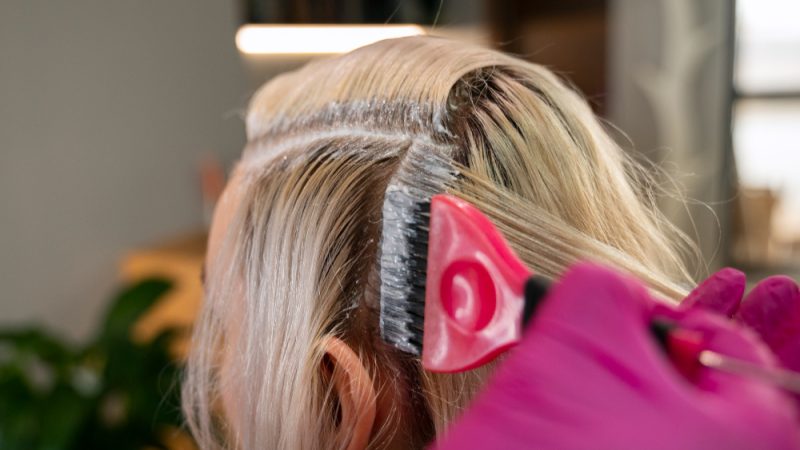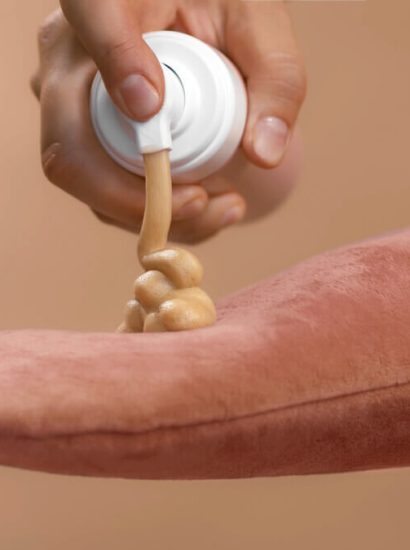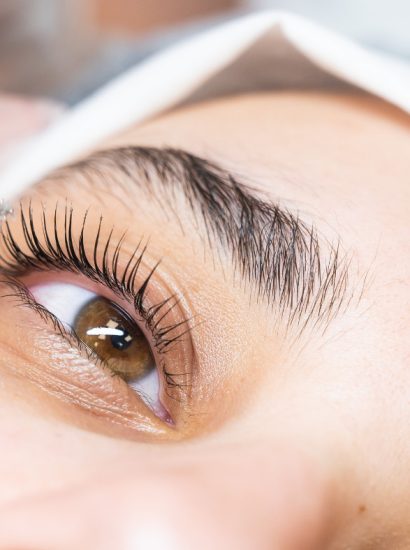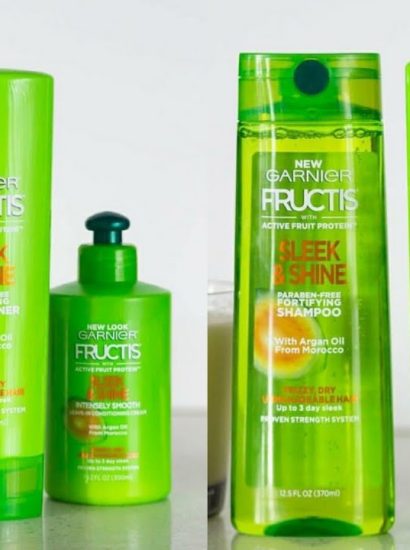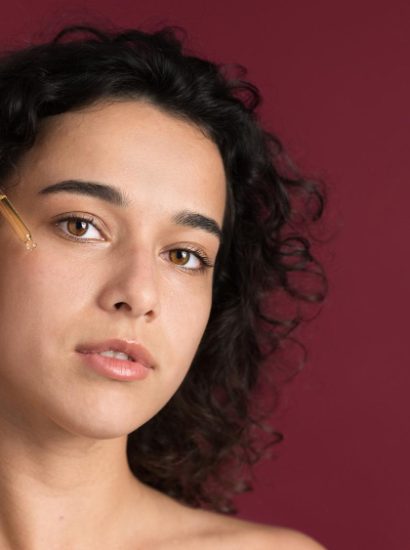Changing your hair color is one of the easiest ways to refresh your look — but choosing the right type of dye can be confusing. Should you go for permanent hair dye, which offers long-lasting results, or semi-permanent dye, which fades gradually and is gentler on hair?
Each option has its strengths and trade-offs, and understanding the differences is crucial for achieving your desired results without unnecessary damage.
In this guide, we’ll break down everything you need to know about permanent vs. semi-permanent hair dye — including how they work, how long they last, and how to decide which is right for you.
What Is Permanent Hair Dye?
Permanent hair dye is a long-lasting coloring solution that penetrates deeply into the hair shaft. It contains ammonia and developer (hydrogen peroxide), which open up the hair cuticle and deposit color pigments inside.
Once processed, the color becomes part of the hair structure, meaning it won’t wash out — it has to grow out or be re-colored.
How It Works:
- Ammonia opens the cuticle layer of the hair.
- Peroxide lifts the natural color (melanin) from the hair strand.
- Color molecules are deposited deep into the cortex.
This chemical reaction creates a permanent color change, making it ideal for those seeking complete coverage or a significant transformation.
What Is Semi-Permanent Hair Dye?
Semi-permanent hair dye coats the outer layer of your hair rather than penetrating deeply. It does not contain ammonia or strong peroxide developers, which means it’s non-damaging and temporary.
Because it only deposits color on the surface, it gradually fades with each shampoo, typically lasting 6–12 washes.
How It Works:
- Semi-permanent dyes use smaller color molecules that sit on top of the hair cuticle.
- There’s no chemical lifting or oxidation process.
- Color fades over time, returning your hair to its natural state.
Semi-permanent dyes are great for enhancing natural tones, adding shine, or experimenting with fun colors without long-term commitment.
Key Differences Between Permanent and Semi-Permanent Dye
Here’s a quick comparison of how they differ:
| Feature | Permanent Hair Dye | Semi-Permanent Hair Dye |
| Longevity | 6–8 weeks or longer | 6–12 washes |
| Ingredients | Contains ammonia & peroxide | Ammonia-free, low or no peroxide |
| Color Change | Alters natural pigment | Adds color on top of existing shade |
| Damage Level | Moderate to high | Minimal to none |
| Gray Coverage | Full coverage | Light or no coverage |
| Maintenance | Requires touch-ups | Fades naturally |
| Best For | Major color change, covering gray | Temporary color, toning, shine |
This chart shows why your choice depends on your goals — longevity vs. flexibility.
Advantages of Permanent Hair Dye
Permanent dyes have remained a salon favorite for decades because they deliver durable, vibrant, and customizable results.
Top Benefits:
✅ 1. Long-lasting color: Maintains depth and vibrancy for 6–8 weeks or more.
✅ 2. Excellent gray coverage: Ideal for mature hair or roots.
✅ 3. Precise customization: Allows you to go lighter, darker, or change tones completely.
✅ 4. Works on all hair types: From fine to coarse, it delivers consistent results.
✅ 5. Requires fewer reapplications: Less frequent dyeing saves time in the long run.
Disadvantages of Permanent Hair Dye
Despite its lasting power, permanent dye has some drawbacks you should consider.
- Potential hair damage: Ammonia and peroxide can weaken hair over time.
Maintenance required: Roots will show as your natural color grows out.
Hard to reverse: Once applied, removing or changing permanent dye can require bleaching.
Chemical sensitivity: Some people may experience scalp irritation or dryness.
If you’re experimenting with color or want something low-maintenance, these factors might make semi-permanent dye a better choice.
Advantages of Semi-Permanent Hair Dye
Semi-permanent dyes are beloved for their gentleness and versatility, especially among those who enjoy changing colors frequently.
Top Benefits:
✅ 1. No damage: Formulas are free from ammonia and harsh chemicals.
✅ 2. Easy to apply: Can be used at home without complex mixing.
✅ 3. Enhances shine: Leaves hair looking glossy and vibrant.
✅ 4. Ideal for experimentation: Perfect for trying bold or pastel shades.
✅ 5. Fades gradually: No harsh root lines as your natural color grows back.
These qualities make semi-permanent dye an excellent entry point for beginners or anyone who prefers low-commitment color.
Disadvantages of Semi-Permanent Hair Dye
While semi-permanent dye offers flexibility, it does come with limitations.
⚠️ 1. Short lifespan: Lasts only a few weeks before fading.
⚠️ 2. Limited color change: Cannot lighten hair or drastically alter your natural shade.
⚠️ 3. May stain: Bright colors can temporarily stain fabrics, towels, or skin.
⚠️ 4. Inconsistent results: Porous or damaged hair may absorb color unevenly.
It’s best for refreshing color or adding shine rather than full transformations.
Which One Should You Choose?
Your ideal dye type depends on your goals, hair health, and lifestyle.
Choose Permanent Dye If You:
- Want long-lasting color that won’t wash out easily.
- Need to cover gray hair completely.
- Plan to maintain a consistent shade over time.
- Don’t mind touch-ups every 6–8 weeks.
Choose Semi-Permanent Dye If You:
- Want a temporary change or color refresh.
- Prefer a gentler option with no damage.
- Like to experiment with vibrant or pastel shades.
- Are new to hair dyeing and want a low-risk start.
If you’re unsure, you can also start with a semi-permanent dye to test how a color looks and feels before committing to permanent color.
Tips for Better Color Results
Whether you choose permanent or semi-permanent dye, these tips can help you get salon-quality results:
💡 1. Start with healthy hair: Deep condition before coloring to reduce damage.
💡 2. Follow instructions carefully: Over-processing can lead to uneven color or breakage.
💡 3. Avoid over-washing: Washing too frequently fades both permanent and semi dyes.
💡 4. Use sulfate-free shampoo: Sulfates strip color; opt for gentle, color-safe formulas.
💡 5. Protect from heat: Use a heat protectant before styling tools to maintain vibrancy.
💡 6. Try a strand test: Always test on a small section first to ensure desired results.
Consistent care keeps your color radiant and your hair healthy.
Conclusion
Both permanent and semi-permanent hair dyes have their place in the world of hair coloring. Permanent dye is best if you want lasting, dramatic results or need to cover gray hair. Semi-permanent dye is perfect for temporary color changes, low maintenance, or healthier hair.
If you’re new to coloring or unsure about your commitment, start with semi-permanent — it gives you room to experiment. But if you’re after a lasting transformation, permanent dye delivers depth and consistency that semi can’t match.
Ultimately, the right choice depends on your hair goals, comfort level, and lifestyle. Whichever you choose, proper care and high-quality products ensure your color stays vibrant and your hair remains strong.
FAQs
1. Which lasts longer: permanent or semi-permanent hair dye?
Permanent dye lasts 6–8 weeks or longer, while semi-permanent dye typically fades after 6–12 washes. Permanent dye is ideal for lasting color, whereas semi is temporary.
2. Can semi-permanent dye cover gray hair?
Semi-permanent dye can blend or soften gray hairs, but it won’t fully cover them. For complete gray coverage, permanent dye is the better option.
3. Does permanent hair dye damage hair more than semi-permanent?
Yes, permanent dye contains chemicals like ammonia and peroxide that can weaken hair over time. Semi-permanent dye is gentler and non-damaging since it doesn’t alter the hair’s internal structure.
4. Can I switch from semi-permanent to permanent dye?
Absolutely. Just ensure your hair is healthy before applying permanent color. Deep condition and allow a few washes between applications to remove residue from the semi-permanent dye.
5. Which type of dye is best for beginners?
Semi-permanent dye is best for beginners because it’s easy to apply, damage-free, and fades naturally — giving you freedom to experiment without long-term commitment.
Also read: Hair Color Too Dark? Here’s How to Fix It Safely at Home

